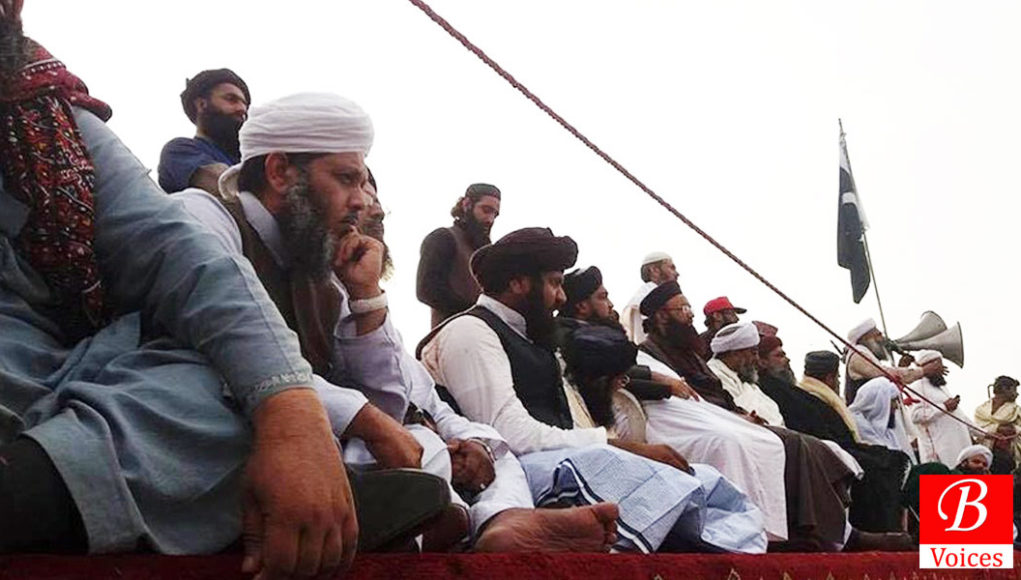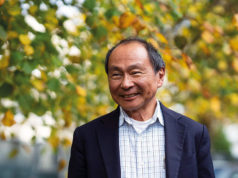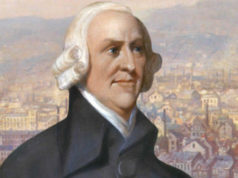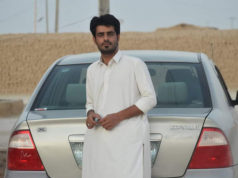After the creation of Pakistan, the main dilemma occurred over the role of religion in the political system and societal structure. This became intense during the period of formulation of first constituent assembly. Some wanted theocratic state while others were in favour of modern Muslim state having secular trends. The confusion had more to do with various statements of Quaid-e-Azam rather than the general will of people.
Dr. Akbar Ahmed elaborates this conundrum in a book titled as “Pakistan: Beyond the Crisis State.” He referred the last two speeches of Quaid-e-Azam as a sort of Gettysburg Address which got broadcasted on 11th and 14th August respectively. According to him, these speeches must be considered as the last testament of the founder of Pakistan regarding the nature of the state.
The first statement was delivered when he was made the President of the first constituent assembly of Pakistan. His words are as follows;
“You’re free; you are free to go to your temples, you’re free to go to your mosques or to any other place of worship in this state of Pakistan… You may belong to any religion or caste or creed- that has nothing to do with the business of the state… We are starting in the days when there is no discrimination, no distinction between one community and another. We are starting with this fundamental principle that we are all citizens of one state.”
The second speech came in the aftermath of Lord Mountbatten referred title which pronounced Quaid-e-Azam as the 21st century ‘Akbar The Great’. Quaid-e-Azam revoked any such comparison between him and Akbar who is usually considered to be the most liberal and secular one among the Mughal family.
“The tolerance and goodwill that great Emperor Akbar showed to all the non-Muslims are not of recent origin. It dates back thirteen centuries ago when our Prophet not only by words but by deeds treated the Jews and Christians after he had conquered them, with the utmost tolerance and regard and respect for their faith and beliefs. The whole history of Muslims, wherever they ruled, is replete with those humane and great principles which should be followed and practiced.”
In the first speech, the secular color could be witnessed very easily whereas the negation of the first message is the subject argument of second speech, bizarrely. This confusion still persists which has somehow created havoc in the social, political and cultural structure of the whole of Pakistani strata.
As far as minorities are concerned, Jinnah always supported rule of law along with the negation of provincialism and hostile attitude with the neighboring country i.e., India. The plight of refugees having constituents for diaspora or heterogeneous community is also well handled by the then leadership. The overall scenario reflects both the secular and Islamic tilt; Islamic in sense of social structure like that managing the migrants and equal rights in accordance with the concept of citizenship whereas secular/liberal in form of political system and nature of the state. Whatever the scheme it was, the confusion and contradiction are obvious and thus, the Two-Nation theory must be dealt with the type of ideology which is neither open to discourse nor freed from rational deficiencies.
Ayesha Jalal describes the narrative as under;
“Jinnah’s resort to religion was not an ideology to which he was ever committed or even a device to use against rival communities; it was simply a way of giving a semblance of unity and solidarity to his divided Muslim constituents. Jinnah needed a demand that was specifically Muslim though unspecific in every other respect. The intentionally obscure cry for Pakistan was contrived to meet this requirement.”
Initially, the role of religion was maintained for the fortification of a nation but the climax of story contrived when Objective Resolution appeared on the surface in 1949. This placed Islam the core ground for the state of Pakistan and the early manifestation of these policies are viewed under the pretext of first Indo-Pak war (1947-48) over the Kashmir issue which bowed seeds of radical Jihad, unfortunately.
Then comes the lengthy procedure of constitution formulation. The very first constitution of 1956 was done with the annoyance of minorities as the later wanted secular clauses but the preamble of the document completely negated their demand. Furthermore, the 1962 constitution also reflects the very same situation. The title of the state was deprived of the word ‘Islamic’ and only this deficiency created terrible instability within the community. Ayub Khan conceded to their demand as he was compelled to do so.
In addition, the 1965 Presidential elections also suggest the political manipulation of Islam. Fatima Jinnah’s decision to take part in elections was not only taken as immoral but against religion too. The play game of Ayub Khan propagated the idea that women couldn’t become a head of Islamic state. Same goes for Benazir Bhutto who, later on, sworn as the First Female Prime Minister of Pakistan.
The only power tool is religion and thus only the religious elite was able to oppose Ayub government which came in the shape of an alliance of five religious parties.
Like Ayub Khan, his successor General Yahya Khan showed the no different attitude towards the cause of Islam. The spirit and morale of soldiers were automatically linked with religious slogans and, Jamiat-e-Islami was made a counter force against PPP (Pakistan People’s Party) and AL (Awami League). Both were infamous for bearing unIslamic features; PPP for being the socialist party and AL for being the representative body of Bengali community- a color of regionalism, indeed. General Niazi also used the spiritual cult to motivate army for ongoing civil war within East Pakistan.
Next comes the era of Bhutto. He, like others, wrestled with the role of religion which ultimately led him to adopt a more conservative course. He gifted the 1973 constitution which was having the Islamic provisions and declared Ahmadis ‘non-Muslims’. He also banned alcohol and gambling, made Friday a non-working day, added ministry of religious affairs as a part of the cabinet, and amended his socialist paradigm as an Islamic one.
He started Pakistan nuclear Programme and called as ‘The Islamic Bomb’, hold first OIC (Organization of Islamic Countries) conference in Lahore, and supported extremism in Afghanistan by arranging links with Jamiat-e-Islami (Burhanuddin Rabbani) and Hizb-e-Islami (Gulbuddin Hekmatyar).
Again, like Ayub government, the PNA (Pakistan National Alliance) tried to go against the Bhutto government. PNA was a combination of nine religious parties which is more commonly called as ‘Nine Stars.’
Regrettably, this was just the starting of strategic usage of Islam. The real Frankenstein monster reveals the Islamization process of General Zia-ul-Haq. He first banned parties for being un-Islamic and uphold his martial law till 1984 on the pretext that he had to purify society through the accountability work. It was just an excuse to give legitimacy to his undemocratic regime and to approve the ouster of popularly elected civilian leader.
He also introduced Hudood Ordinance, Shariat Benches, and the ugliest turn came when Soviet-Afghan war (1979-89) occurred. There, we didn’t only get international aid in the wake of our involvement in Afghanistan but madrassa and Jihadi/sectarian culture also.
The decade of instability followed Zia regime where Benazir Bhutto and Nawaz Sharif ruled one after the other. In that era, during 1988 elections, IJI- religious alliance of eight parties- got an introduction in the political culture. Benazir Bhutto, the then Prime Minister, found difficulty with a military regime with regard to Afghanistan and Kashmir policies. These foreign policy issues lied in the military domain, entirely. The government got a hung parliament and which then ended with the Ghulam Ishaq Khan presidential blow of 58 (2) (b). In the next phase, 1990-93, IJI proved victorious but again we see no absolute majority. Yes, Benazir Bhutto second term, 1993-97, witnessed some more beleaguered situation but here again religious elite played the role. Apart from the Khalistan issue, character assassination and the corruption issues dominated the media circulates. Only the 1997 elections achieved an absolute majority but military got dominance again in form of another military coup. We must not forget the Kargil war where our soldiers endeavored to lead the salvation of Kashmiri brothers.
General Musharraf, after 9/11, introduced enlightened moderation which he explained in the following words;
“The first part is for the Muslim world to shun militancy and extremism and adopt the path of socio-economic uplift. The second is for the west and the United State, in particular,r to seek resolve all political disputes with justice and to aid in the socio-economic betterment of the deprived Muslim world.”
The official announcement regarding alignment with US against terrorism put state at crossroads with the existing Islamic ethos. Zia did well in radicalizing the society which found Musharraf at the point of no return. International pressure lessened with the banning of some militant groups but it resurfaced with new labels and old ideologies. Al-Qaida, Taliban and Lahkar-e-Taiba remained at dominant position while the relation with military became obscure; sometime effective while in case of waging proxy wars but sometimes violent like in case of Red Mosque incident of 2007.
In short, Islam was considered to be the binding factor if and only the period comprising Pakistan Movement till the Bangladesh chaos is taken into account. But, after the dismemberment anathema it was made a strategic ally of Pakistan political establishment. The centuries old improper religious propagation made the land a more fertile source for Zia and, thus, he put a last nail in the coffin. Musharraf tried to made an end of the process in the name of ‘Enlightened Moderation’ but gave birth to a more lethal phenomena called as ‘Talibanization.’
This article is last part of the two-part series on this topic. Click here to read the first part.
Author is a team member of Balochistan Voices and a Student of BS (Hons) Political Science in University of the Punjab, Lahore. She hails from Loralai District. Click here to read previous articles written by the author.
Disclaimer: Views expressed in this article are those of the author and Balochistan Voices not necessarily agrees with them.
Share your comments!








